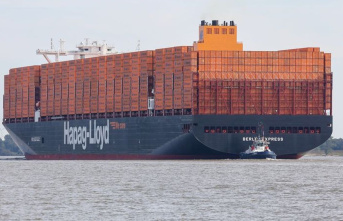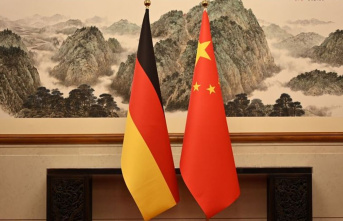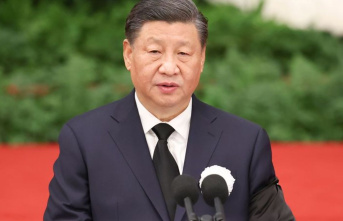The year 2022 has pulverized old records at the gas stations. Fuel prices well over two euros and double-digit price increases from one day to the next taught drivers to fear. At the end there is a record: On average, a liter of premium E10 petrol will have cost around 1.86 euros and diesel 1.95 euros, as calculated by the ADAC. That is around 27 or 47 cents more than in the most expensive tank year to date, 2012.
Something else was new: the oil price was not solely to blame. In the past, fuel prices almost always followed crude oil prices. But when fuel prices shot up shortly after the start of the Ukraine war, they did so much more than could have been expected from the price of oil alone. At the beginning of March it rose to 140 dollars for a barrel (about 159 liters) of the North Sea variety Brent, which is important for Europe, but unlike the fuel prices it was not an all-time high. The Federal Cartel Office also determined a "sustainable decoupling" and is currently examining the industry.
Oil companies made "very big profits"
But what was it then that drove prices to unprecedented heights? Several factors come together: In the interim report of its investigation, the Cartel Office emphasizes that the oil companies have made "very large profits" with their refineries. Jürgen Albrecht, ADAC fuel market expert, also refers to the refineries. Their returns would have multiplied.
This coincides with figures collected by the Cartel Office. While the average net margins never exceeded 3 cents per liter of petrol or diesel in 2021 and were sometimes negative, they rose sharply from March 2022. In May it was already a good 15 cents for petrol and around 13 cents for diesel. Individual refineries also made a profit margin of more than 25 cents per liter.
Later values are not found in the cartel office's interim report, but according to Albrecht, the margins remained high in the following months and even rose. Good earnings were also made on other levels.
Industry is looking for gas substitutes
There are other factors as well: Insecurity and shaky supply chains played a role in the first phase of the war. In the case of diesel, according to Albrecht, this fuel was also imported from Russia in large quantities as a finished product and that the industry is now increasingly buying it as a gas substitute.
The difference between an expensive and an extreme tank year was made by a few weeks around the beginning of the Ukraine war, during which fuel prices accelerated: in the first ten days of March alone, E10 rose by a good 38 cents and diesel by a good 58 cents. "There's never been anything like it," says Albrecht. "It was really expensive for those affected." The price of diesel overtook that of petrol and peaked at more than EUR 2.32, E10 more than EUR 2.20 - the nationwide daily average. Even with small cars, a full tank could suddenly cost more than 100 euros.
This was probably also reflected in the fuel consumption. Although the corona restrictions were largely lifted in the spring, consumption - especially for petrol - remained well below that of the pre-corona period. This is indicated by the official mineral oil data on the delivery of fuel. In the summer, the pre-corona level was reached for petrol. During this time, however, the billion-dollar tax cut on fuel, which should relieve the burden on consumers, applied. In September - after the end of the tax cut - deliveries plummeted. More recent figures are not yet available.
Prices fall again
Since then, fuel prices have fluctuated. Gasoline has even "gone back to normal after many months of exaggeration," as Albrecht puts it. In the case of diesel, this is far from being achieved - also because of the additional factors mentioned. "But it's at least going in the right direction compared to October," says Albrecht.
The price of oil, which fell again over the course of the year and more strongly from the summer onwards, is also noticeable here. Recently, the price fluctuated around 80 dollars. The decline is mainly due to the gloomy economic prospects. At times, oil prices fell so significantly that even the powerful OPEC oil group - which also includes Russia - felt compelled to cut production drastically.
According to Albrecht, how fuel prices will continue depends, among other things, on the war in Ukraine, the global economy and the winter. Diesel prices are more likely to fall in the spring because then the demand for the similar fuel oil will fall. However, Albrecht emphasizes that it is not possible to reliably predict how long other special factors such as the needs of industry will last. "But I assume that at some point there will also be a certain normalization with diesel."








